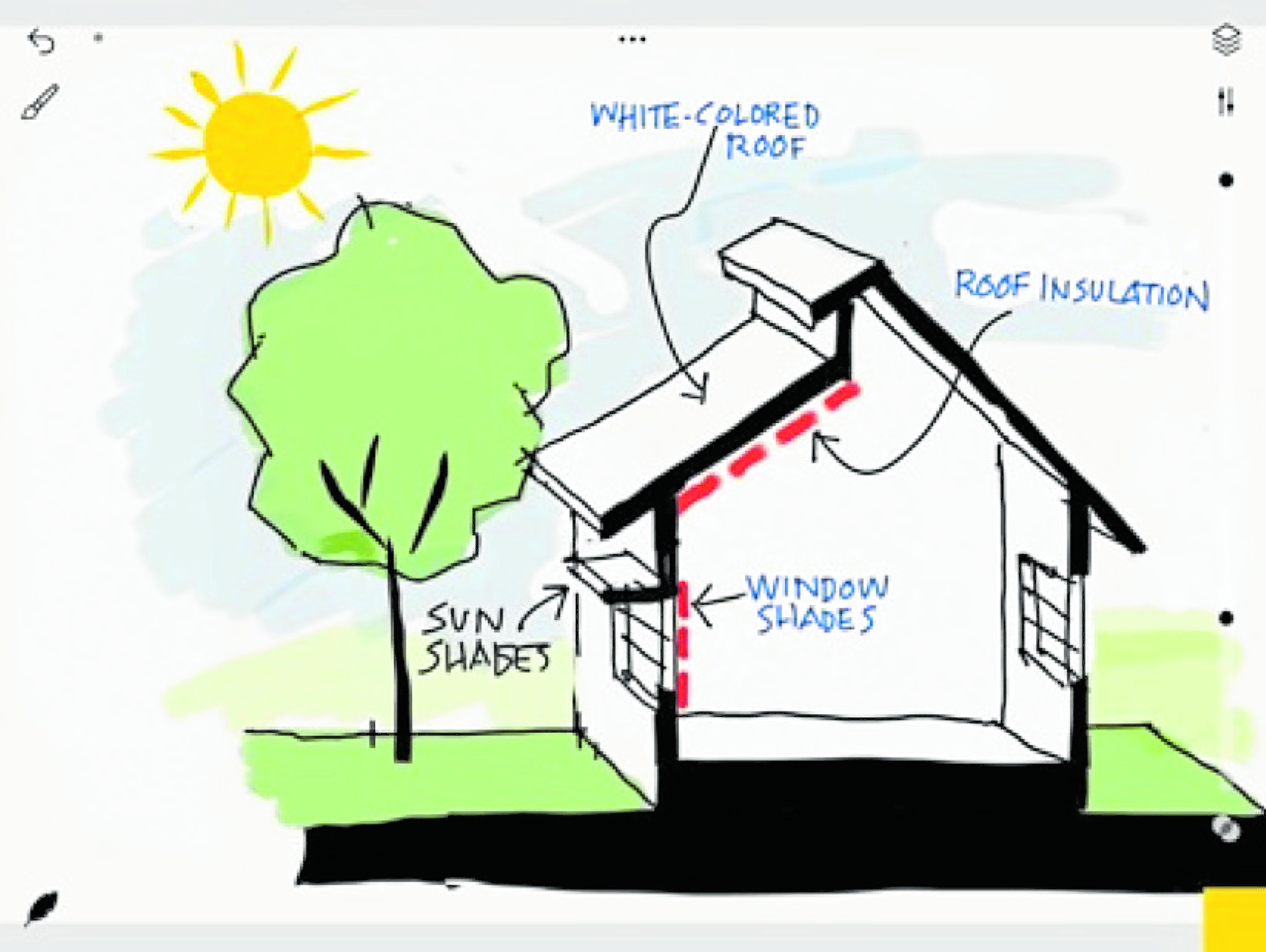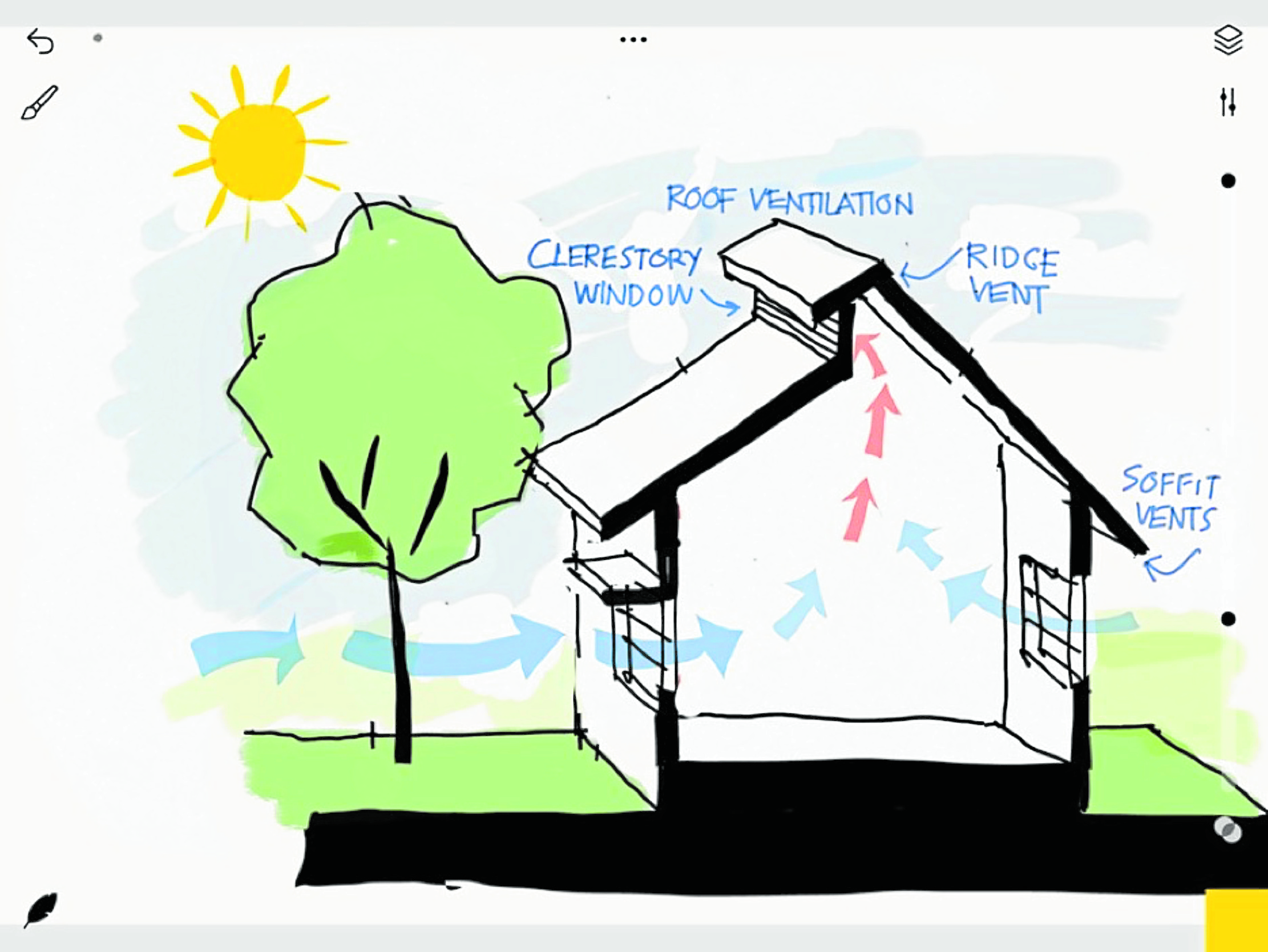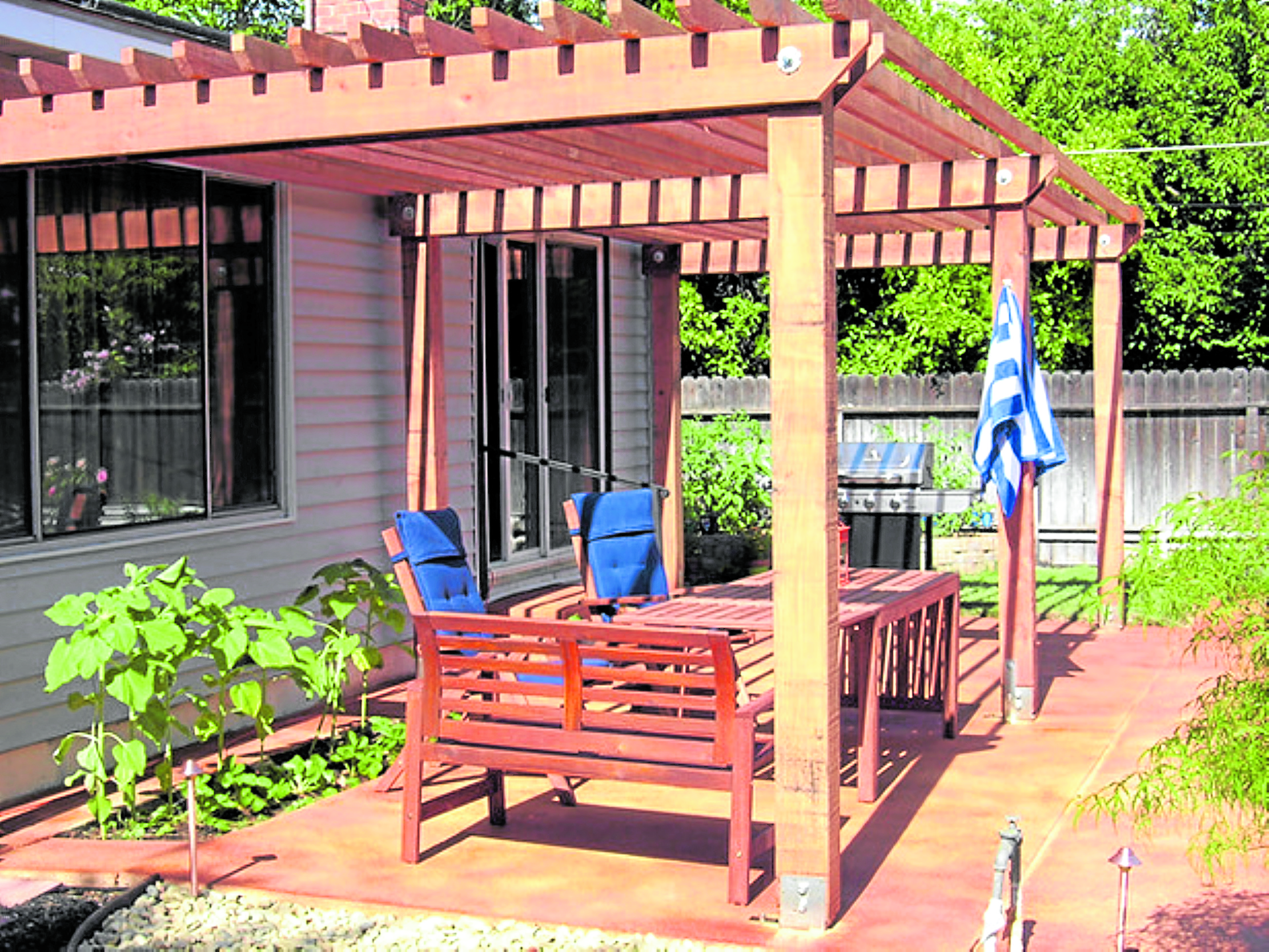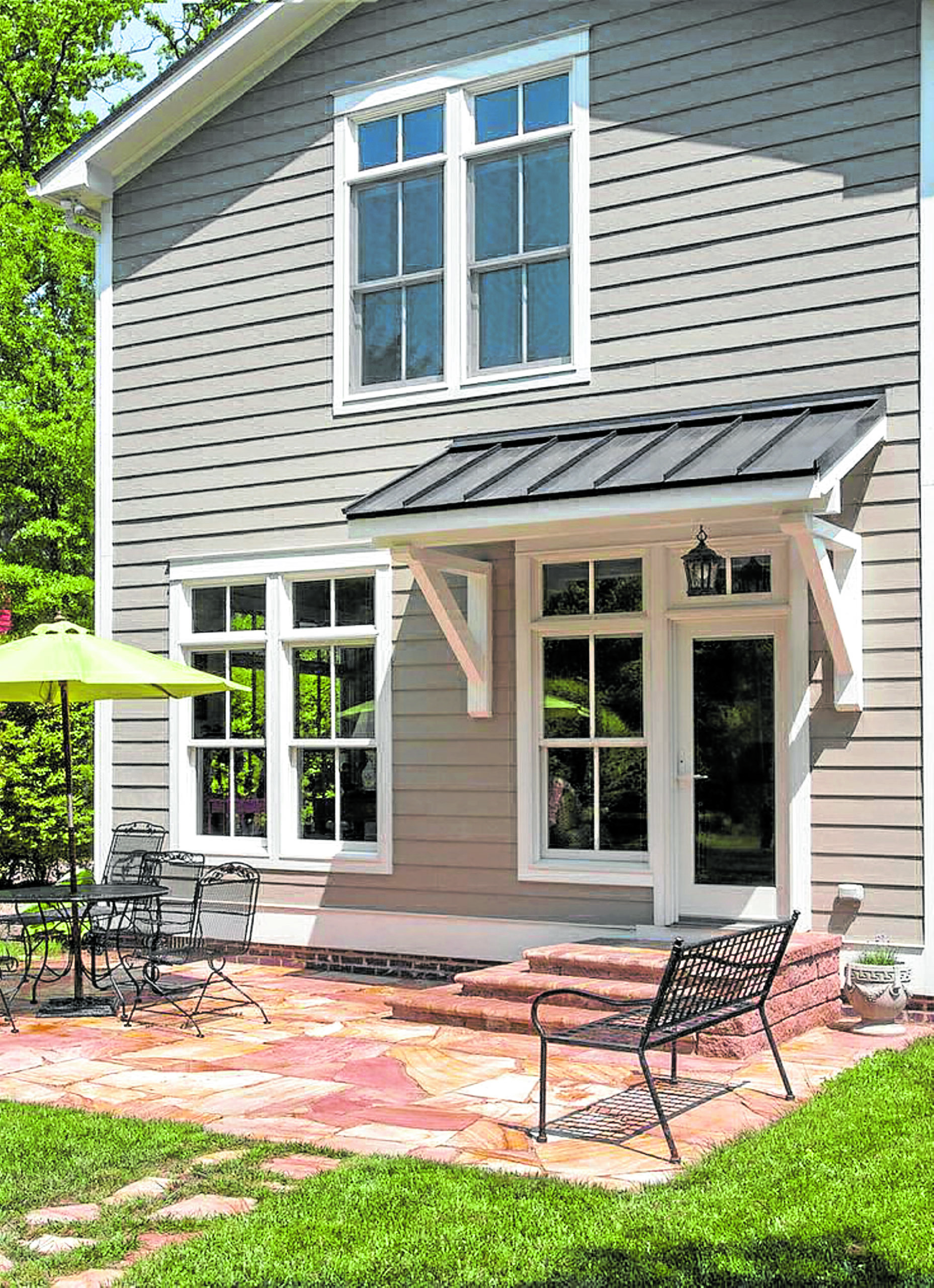Is your home ready for the hot summer days?
We are already experiencing very hot days with temperatures exceeding 40 degrees! From March to May, the Philippines experiences very hot summers at an average temperature ranging from 25 degrees Celsius to 32 degrees Celsius (78 to 90 degrees Fahrenheit), with an average annual humidity of about 77 percent.
Can you live comfortably in your home under the present conditions knowing that it will get worse before it gets better?
Here are several design strategies to help cool your home and will help you understand why and what causes your home to overheat especially during summer.
Two basic passive strategies
These are two basic passive strategies to prepare your home for the coming hot summer days. As the term implies, “passive” means inert, without inherent power or action, motion or resistance. It means design that does not require electro-mechanical equipment for heating or cooling.
- Protection of the building envelope
The building envelope is the first line of defense against the natural elements. It is made up of the exterior components of your home such as the walls and doors, windows, roof. For new construction, building orientation is a good starting point for protecting the building envelope. It means minimizing solar exposure while maximizing daylighting. This design strategy must be adopted at the start of the design process
- Heat dissipation or flushing out heat
This refers to design solutions that help to flush out the heat that has built up indoors.
Design strategies for protecting the building envelope
Let’s start with the roof which is the most important part of your home. Why? The roof of your home provides the structural support that keeps your home together. It is what supports the electrical system. The interior design cannot be defined without the roof.
The roof protects your home from the weather, be it dry or wet season. It is also what gives character to your house. And when done properly, the roof design can increase the value of your home.
- Light-colored roofing
The first step to help cool your home is to paint the roof a neutral color such as white or beige. This will allow the sun’s rays to bounce or radiate heat off the roofing. This contrasts with many roofs which are usually dark green, or dark brown or dark red. These colors absorb rather than radiate heat.
The rationale for white roofs is quite simple. During summer, particularly in hot humid countries like the Philippines, light-colored clothes keep us cool. The same is true for buildings.
To illustrate this, imagine the surface temperature of a dark roof which can be as high as 80°C on a sunny day. This heat is absorbed into the air space under the roof and continues to build up eventually affecting the rooms below. This heat buildup increases the need for costly airconditioning.

Protection of the building envelope . The building envelope is the first line of defense against the natural elements.
It is made up of the exterior components of your home such as the walls and doors, windows, roof. —ORIGINAL ARTWORK BY AMADO DE JESUS
Studies show that white roofs reduce airconditioning costs by 20 percent in hot, sunny weather. White roofs are most appropriate for cities with a year-round warm climate.
- Roof insulation
Installing thermal or heat insulation under your roof can also help cool your house. It is placed between and under the rafters of the roof itself. Thermal insulation creates a barrier around the building either for the roofing or for the wall, which reduces the amount of heat entering the home on a warm day.
- Light-colored walls
Light-colored walls minimize the increase in the surface temperature of the wall, which increases the indoor temperature of rooms.
- Thermally insulated window drapes
Curtains, lined with a second and a third enclosing fabric for protection from the sun’s harmful rays including sound and external noise, make it much easier to cool homes in the hot season.
- Louvre window shades
These window shades are frequently made of aluminum, metal, or wood. They are very effective in protecting the interiors from direct exposure to the sun while allowing the window to be as breathable as possible.
- Exterior sunshades
Sunshades is the general term to refer to window coverings that are installed from the outside. The drapes and the louvre windows mentioned above are only partially effective in shielding heat compared to exterior sunshades, which will not allow the warm air to reach the windows in the first place. Examples of sunshades are awnings, parasols, shutters, and vertical and horizontal trellises.
- Low emissivity glass
Low e-glass is an energy-efficient glass that helps reduce the amount of heat that enters the home on a summer day. It is normally used in large buildings to save on commercial utility bills but can also be applied in homes.
- Solar window tinting
Solar window tinting provides protection from ultraviolet rays without making the windows appear darker. Dark tinted glass should be avoided in hot climates because it absorbs more light than heat. This means it will radiate heat into the interior of your home.
- Shade trees
Shade trees, when planted on the west side of your home, instantly cool down the home and its adjacent garden and open space. Trees can reduce airconditioning use by 30 percent. They also protect your home from ultraviolet rays which may cause skin disorder and cancer. Choose native Philippine trees because they are suited to site conditions that do not require soil modification or fertilizers.
Design strategies for flushing out heat in your home

Heat dissipation or flushing out heat. This refers to design solutions that
help to flush out the heat that has built up indoors. —ORIGINAL ARTWORK BY AMADO DE JESUS
- Stack effect
The stack effect, or chimney effect, is a naturally induced vertical flow of air through a structure. To illustrate, just as in a fireplace, warm air escapes and rises through the chimney as ambient air from the room is drawn into the fireplace to replace it. The net effect is that warm air escapes from the top of the chimney, while cold air is drawn in at the bottom of the chimney creating a self-sustaining upward flow of air.
- Roof ventilation
Flushing out heat through the roof ventilation is the process of supplying continuous air supply through the attic or the highest point in your home.
- Soffit vents
This type of ventilation should be placed under the roof eaves vent. Proper ventilation occurs when cool air enters near the eaves and exits near the peak.
- Ridge vent
This is a roof exhaust vent installed along at the peak of a sloped roof. It allows warm humid air to escape through the attic.
- Clerestory windows
These are high-level vertical windows that are placed at the upper part of the wall. They are an excellent way to allow heat to escape a building while introducing daylight into interior spaces.
Adopting passive strategies to prepare your home for the hot summer days means maintaining a healthy, comfortable and productive indoor climate rather than the more prevailing approach of being dependent and addicted to mechanical ventilation.
The author is the principal architect of A.P de Jesus & Associates–Green Architecture and vice chairman of the Philippine Green Building Initiative. For comments or inquiries, email amadodejesus@gmail.com


